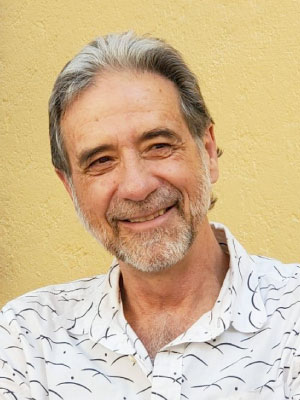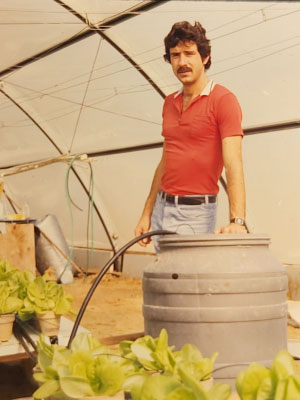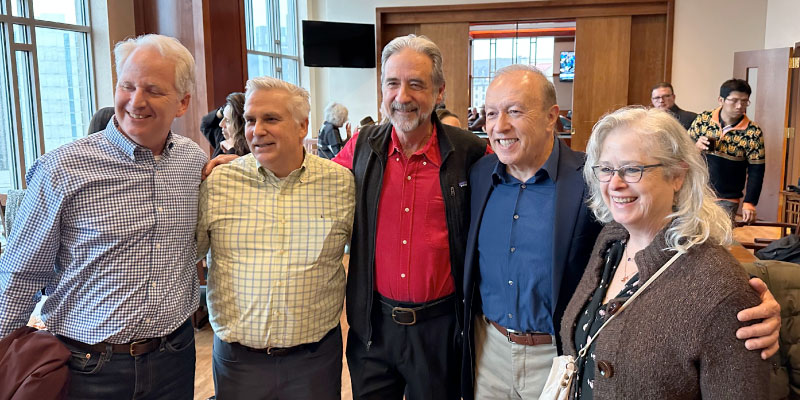It would be easy enough to say that Alberto Vargas is an interdisciplinary scholar, teacher, and mentor. Accurate, too, according to Merriam-Webster’s definition of “involving two or more academic, scientific, or artistic disciplines.” But interdisciplinary, in this case, feels like a woeful understatement.

Over his storied career, Vargas has collected fields, expertise, and ecosystems as some collect trading cards or stamps. Vargas is an agronomist, a conservationist, an economist, an ecologist, with strong interest in philosophy, psychology and social sciences and humanities. He’s a researcher, a teacher, an analyst, an advisor, a mentor, an administrator and an advocate. “I can’t help it,” he laughs. “It’s appealing to learn something new and from scratch … It’s like a challenge.”
The thrill of learning something new, of finding a new perspective, has energized his experience from his roots in Hidalgo, Mexico, to his office in Ingraham Hall on the University of Wisconsin–Madison campus, where he has served as the associate director of the Latin American, Caribbean and Iberian Studies Program for the past two decades. “Interdisciplinarity and collaboration,” Vargas says. “That’s sort of what defines my arc.”
Arid/Tropical
Vargas’s academic journey began at Monterrey Institute of Technology and Higher Educationin the late seventies — “at the time of the Green Revolution,” he says — where he studied agronomy. “What attracted me to agriculture was that you needed to learn very different things: the science base, a little bit of economics, a little bit of water management, and sociology,” he says. “That breadth caught my attention.” His coursework had breadth, but so did the environments of Central Mexico. Learning about different types of agriculture, including rain-fed fields and poor soils, piqued his interest in the environmental fields outside of “technified agriculture” — particularly watershed conservation, forestry, indigenous agriculture and traditional ecological knowledge.
To learn more, he went south to the state of Quintana Roo on the Yucatán Peninsula. “I almost had to retrain myself because the tropics are a completely different reality.” Though its history dates to the ancient Mayan world, it wasn’t until 1974 that Quintana Roo gained statehood within the Mexican Republic. Shortly after, tourism exploded, becoming a global destination with port cities like Cancún and the Mayann Riviera. Vargas was among the founders of the Centro de Investigaciones de Quintana Roo, an eco-development research group hoping to guide the new state toward sustainable development. “That was a dream that did not entirely succeed, but it was very exciting,” Vargas says, although the team did have some lasting impacts, including the Sian Ka’an Biosphere Reserve. What started as an interest in agriculture and forestry grew to a broader interest in conservation.

Actions/Academics
To both explore this interest and get back into a more technical field, Vargas moved to the United States and enrolled at Texas A&M University. He earned his master’s in horticulture and international development, working on irrigation issues along the U.S.-Mexico border. Now with agricultural, conservation, and development feathers in his cap, he headed east to the heart of where those fields were just starting to merge into policy and action: Washington, DC. He was awarded the Barbara Ward Fellowship at the International Institute for Environment and Development.
“One of the highlights of my work there was working on the first consultative meeting of the Inter-American Development Bank with representatives of environmental NGOs fostering environmental protection and natural resource conservation in Latin America,” Vargas recalls. Environmental government agencies have just started to emerge in the region, and this 1987 meeting was pivotal to bringing together environmental considerations in economic and development projects. It was also in that meeting, Vargas remembers, that the Brundtland Report, or Our Common Future was presented to a curious audience — with an agenda to guide development and laid the groundwork for today’s Commission on Sustainable Development.
Vargas’s work in DC attracted the attention of Diana Liverman, a geography professor at UW–Madison. She recruited Vargas and his wife, Laurie Greenberg (the pair met in Quintana Roo and had been working alongside each other since) — to pursue their PhDs in Madison. “It took a couple years to put it together,” he says, but the duo finally made their way to the Midwest. “UW–Madison had everything we wanted … and we didn’t mind the winter.”
Both Vargas and Greenberg started coursework in the land resources program in the Nelson Institute for Environmental Studies. Vargas was ready to put his hands-on work into an academic setting. “I took several courses in agricultural economics, particularly institutional economics, that really captured my attention as a framework to understand environmental problems,” he says. He felt like he needed another piece to complete the puzzle, so he reached out to the forestry department and Professor Jeffrey Stier in the College of Agricultural and Life Sciences (CALS). That led to the completion of a joint PhD within the two schools in 1998.
As Vargas was writing his dissertation, he needed a job to support his growing family. He’d taken a couple of classes in geographic information systems (“Following the advice of Diana Liverman,” he remembers), which landed him an offer with the Wisconsin Coastal Management Program. His work focused on natural hazards and coastal erosion in Wisconsin’s Lake Michigan and Lake Superior shorelines. “That’s another big jump to work in something that was entirely new to me,” he says. He ended up staying for nine years. He was the liaison of that government program to UW–Madison Sea Grant, mentored by Al Miller and Philip Keillor, and supported research of many graduate students who became close colleagues, such as David Hart.
Throughout his coastal work, Vargas kept strong ties to the Nelson Institute. As an honorary fellow, he worked closely with Tom Yuill on a variety of projects, including the institute’s collaboration with the Universidad de Guadalajara, a partnership that continues today.
Present/Future
In 2005, Vargas returned to campus full time to serve as the associate director of the Latin American, Caribbean and Iberian Studies (LACIS) program, a position he held until his retirement in August 2025. During his tenure, Vargas helped put LACIS on the map through expanded academics (they offer a bachelor’s and master’s, a PhD minor, and dual degree with the Law School) and partnerships both on and off campus. His interdisciplinary background played a key part: “Because I spoke the language of people in CALS, in agriculture, in life sciences, in plant pathology, in forestry, in dairy science, I could do that.”

While leading LACIS, Vargas also taught courses in international studies and the Nelson Institute. Early into his teaching career, he was asked to craft and lead a graduate seminar on sustainable development, taught in the Nelson Institute’s conservation biology and sustainable development master’s program. After teaching the seminar for a few years, the program was reworked into today’s environmental conservation (EC) MS. Vargas played a critical role in the program’s transformation and continued success. He taught the seminar for 17 years, updating the coursework each year, and has advised dozens of students in the program.
In mentoring today’s students, Vargas stresses the unique synergies of taking an interdisciplinary approach. “Yes, we need specialists,” Vargas argues, “but we also need generalists. A varied background is a plus, not a hindrance. You need someone who can speak the language of different disciplines and put them together to understand a particular situation or problem, and then decide on next steps,” he says. “But this is not easy or easier; it is hard work and has to be approached with a great deal of humility.” He also supports students when they need to “pivot” — encouraging them to try new things and adjust their careers to best express themselves and contribute to the public good.
While leading LACIS, Vargas started a new collection of sorts: cross-campus collaborations. To name a few, he has held affiliations with the Global Health Institute; the College of Agricultural and Life Sciences and its agroecology program; the Center for Culture, History, and Environment; the Wisconsin Intensive Summer Language Institutes; the UW-Native Nations Working Group; and, most recently, the Transdisciplinary Center for Research on Psychoactive Substances through the School of Pharmacy, whose executive committee he helped found and participates on.
Besides Vargas, what could all of these programs possibly share? The questions they’re trying to answer, Vargas argues. “Fundamental philosophical questions, such as, ‘What am I doing here? What is this for?’ ” he lists. “Why do we care about this ecosystem or this species? What’s the relationship with our well-being?”
He may not have all the answers … at least, not yet, but he has a strong thesis. “Because we are here,” he states. “We have a responsibility. We have a connection to the beauty of what is: the universe and life and the planet. We must care for it … We have to care for it.”